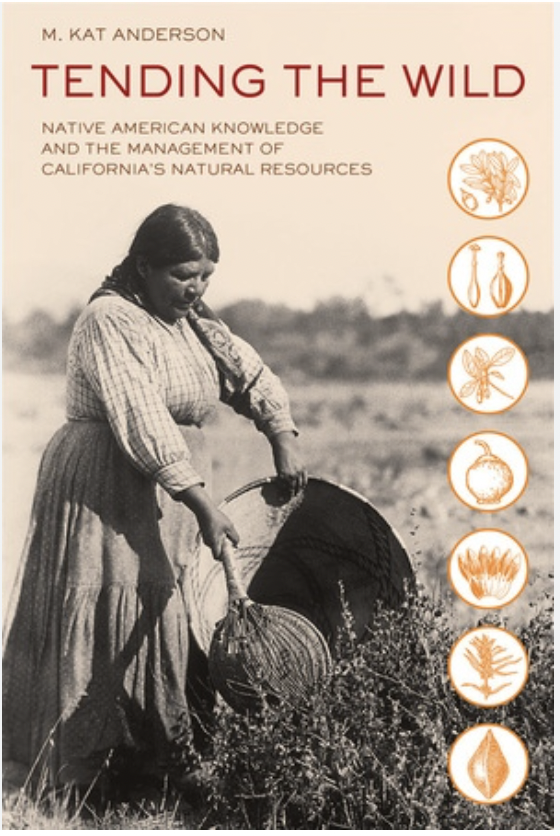Tending the Wild: Native American Knowledge and the Management of California's Natural Resources by M. Kat Anderson
A tour-de-force book and guide to land stewardship, the importance of Indigenous-minded humans in the conservation and preservation of ecosystems, and the rich abundance found in lands tended for millenia by Indigenous peoples. Essential lessons for any conservation-minded person today. Available now in many formats, including Kindle and Audiobook. A compellingly written and narrated modern classic.
An excellent summary from an essay by Million Trees about Tending the Wild. To read the entire essay click here.
“Tending the Wildreports that 60-70% of the diet of California Native Americans was from plants. Miwoks report using 48 species of plants for fresh greens compared to just a dozen salad greens typically found in a modern market. California Native Americans ate 15 of 31 native clover species. Clover seed was broadcast-seeded onto burned ground because it improved the fertility of the soil by restoring nitrogen to the burned soil.
Baskets were equally important to their culture. Every family typically had 22 different types of baskets for a variety of purposes such as storage, food gathering, beating seeds from plants, cooking, water storage and transport, fish traps, small-animal traps, etc. Seventy-eight plant species were used by California Native Americans to make these baskets.
Here is an incomplete list of the methods used to foster the plants most useful to California Native Americans:
The seeds of favorite plants were planted to be available close to living quarters. Native tobacco is an example of a plant found around Native American settlements, presumably planted there.
The seeds, bulbs, corms, rhizomes etc., of favorite plants were collected and transplanted close to settlements.
Bulbs, corms, roots, rhizomes were harvested selectively to preserve the plants which were stimulated by the thinning of the plant.
Fields of useful plants were weeded to create monocultures that made harvesting more efficient.
Plants were pruned and coppiced to maximize fruit production.
Plants were pruned to produce the straight twigs and grasses useful to make baskets and arrow shafts.
Plants were irrigated to promote growth and maximize fruit production.
Plants were treated by cooking, soaking, etc., to remove toxins so they could be safely eaten.”
Impact on the landscape
Over the thousands of years that California Native Americans practiced these land management practices, the landscape was altered by them:
Plants that did not tolerate frequent fires died out, creating a landscape that is dominated by plants that are adapted to fire. Jon Keeley (USGS) informs us that over 200 native plant species are “fire endemics,” requiring fire to germinate and dying out within a few years after a fire. (2)
The Europeans arriving at the end of the 18th Century found a landscape dominated by grassland because repeated fires prevented succession to shrubs and forests. The absence of shade produced a landscape of native plant species that require full sun.
Forests were open and park-like with little understory, which had been repeatedly cleared by frequent fires.
The plants which were most useful to Native Americans were more likely to survive than those that were not useful because they were tended and competing vegetation burned or weeded.
The natural ranges of the plants which were useful were altered by the land management practices of Native Americans. They were transplanted and grown from seed where they were accessible to the community.”
